Private First Class George Allan Benton
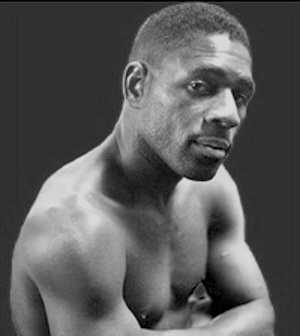
- Unit: Company C, 1st Brigade, 7th Cavalry
- Date of Birth: May 15, 1933
- Entered the Military: January 14, 1956
- Date of Death: September 19, 2011
- Hometown: Philadelphia, Pennsylvania
- Place of Death: Philadelphia, Pennsylvania
- Award(s): Good Conduct Medal
- Cemetery: Section 6, Site 167 . Washington Crossing National Cemetery, Newtown, Pennsylvania
Mentored by Mr. Gregory Maigur
Holicong Middle School and Central Bucks High School - East
2024/2025
Early Life
On May 15, 1933, George A. Benton was born into a sizable family of 11 people in Philadelphia, Pennsylvania. The child of Ottis and Lily May Benton, George had four sisters and four brothers, all of whom attended Philadelphia public schools.
It was during high school when Benton discovered his fierce passion for boxing, after first stepping into the ring at the age of 13. Only three years later, Benton quit school and made his professional debut, where he emerged victorious by decision. This win was just the first of many, as he went on to become a top-rated middleweight contender with a career record of 62 wins, 13 losses, and 1 draw.
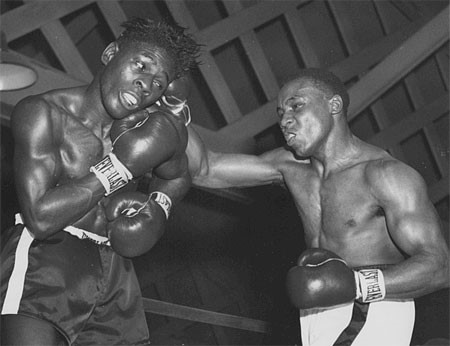
Homefront
George Benton grew up in segregated Philadelphia, which experienced many changes after World War II. Philadelphia played a key role in the Korean War. It produced munitions and equipment needed to fight the war. At the time of the Korean War, Philadelphia experienced rapid social and demographic change. Many African Americans moved to Philadelphia in the years leading up to the war, and their desire for jobs in the growing war industry caused Philadelphia neighborhoods to grow. Unfortunately, this led to “hypersegregation,” when a racial group is separated from others in their own distinct geographical area.
The Philadelphia Navy Yard hired thousands more workers during the Korean War. Also, Philadelphia was the home to the Frankford Arsenal, an ammunition manufacturing facility during the war. The city was a military powerhouse at the time, fueling the American war effort in Korea.
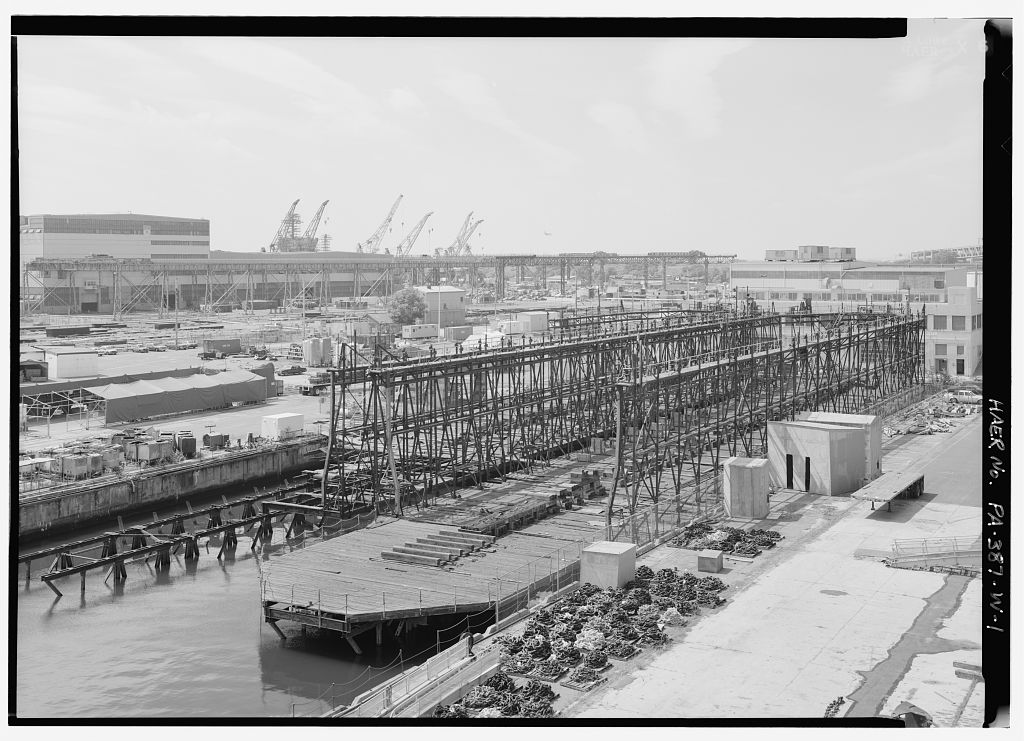
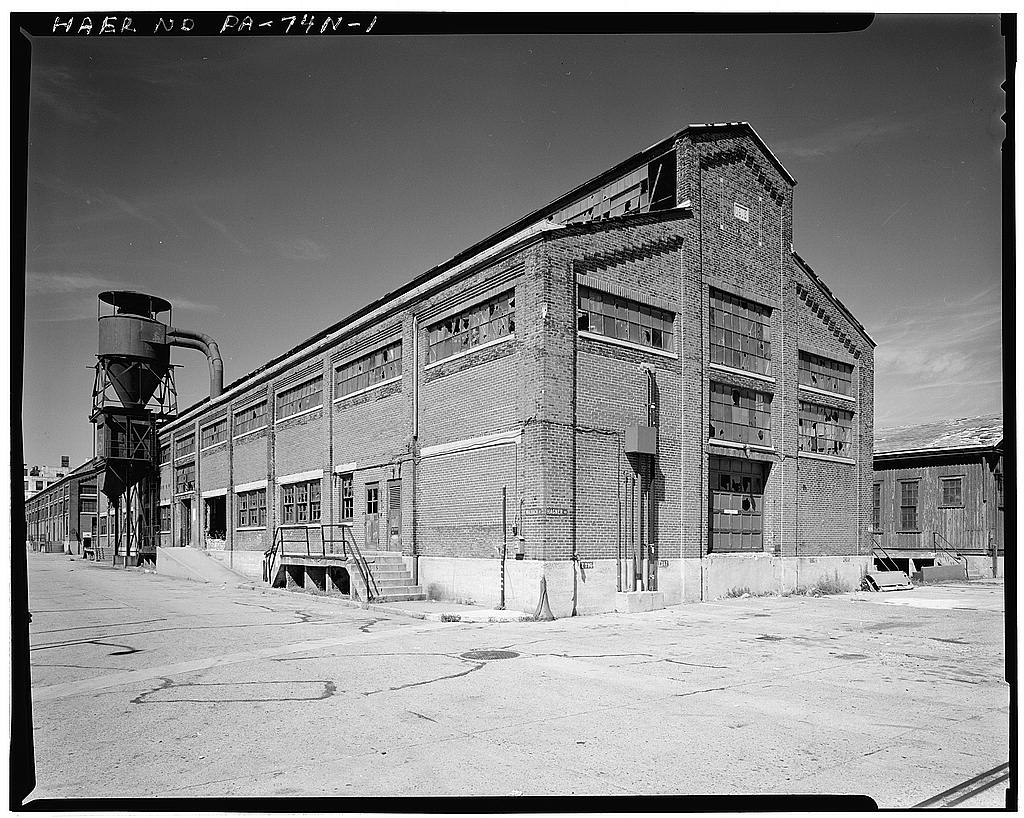
Military Experience
George Benton was drafted into the U.S. Army at the age of 22 on January 4, 1956.
During this same year, Benton left the United States to serve abroad with Company C, 1st Brigade, 7th Cavalry in Honshu, Japan. Company C was likely stationed at Camp Zama, which served as a major base for U.S. occupation forces in Japan and was home to many units, such as the 7th Cavalry. There, Benton likely helped to protect Japan from ongoing threats from North Korea and helped to rebuild the surrounding areas.
Even though the Korean conflict reached a stalemate in 1953, the 7th Cavalry continued to tie up loose ends left from the destruction of the war for a number of years after peace was declared. Benton’s specific role is unclear because his Official Military Personnel File burned in a fire at the National Personnel Records Center in 1973.
Benton returned to the U.S. six months later, on December 20 of the same year, and served the remainder of his enlistment with the 7th Cavalry at Fort Sheridan, Illinois.
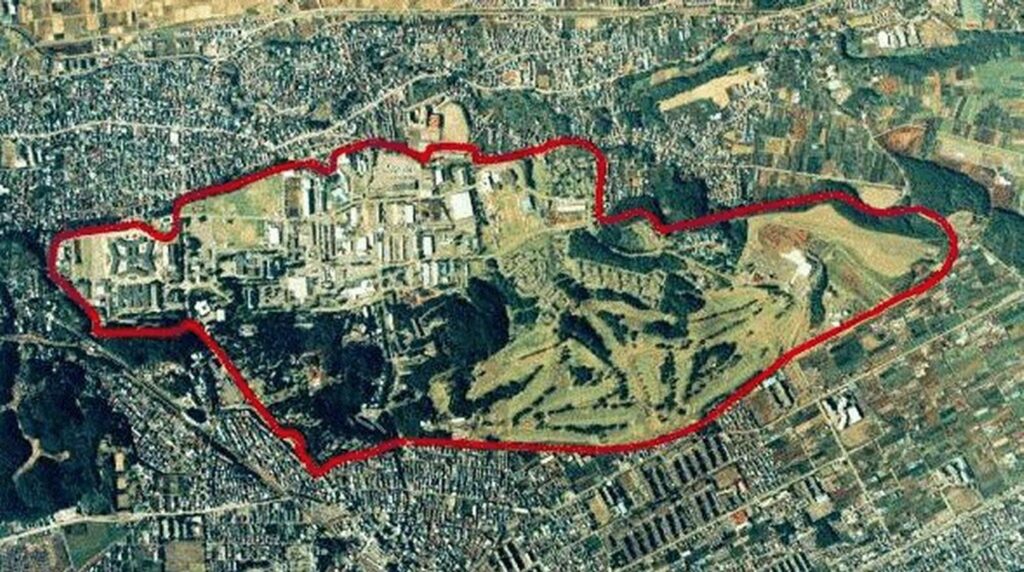
Veteran Experience
After Benton’s service in Honshu, he returned to his hometown of Philadelphia, Pennsylvania. He married Mildred Hogans on November 24, 1963. Not long after their marriage, the couple gave birth to two sons, Anthony and Ondra.
Immediately after returning home, George Benton returned to boxing. This lasted a few more years, until the early 1970s, when George Benton suffered a gunshot wound to his spine in a family dispute. Benton spent two years in the hospital and, during this time, it became evident that continuing to box professionally was no longer be a possibility.
However, this setback did not stop George Benton from making a difference in the boxing world. He shifted to training boxers and earned himself the title of “The Professor” among many of his now-famous students. Arguably, Benton had a much greater impact on Philadelphia’s boxing community as a trainer than he ever would have as a boxer.
In 2001, George Benton was inducted into the International Boxing Hall of Fame, not as a boxer, but as a trainer.
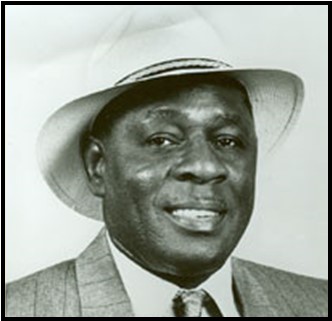
Commemoration
When George A. Benton passed away on September 19, 2001, he left behind a powerful legacy of honor, courage, and resilience. He is buried at Washington Crossing National Cemetery in Newtown, Pennsylvania.
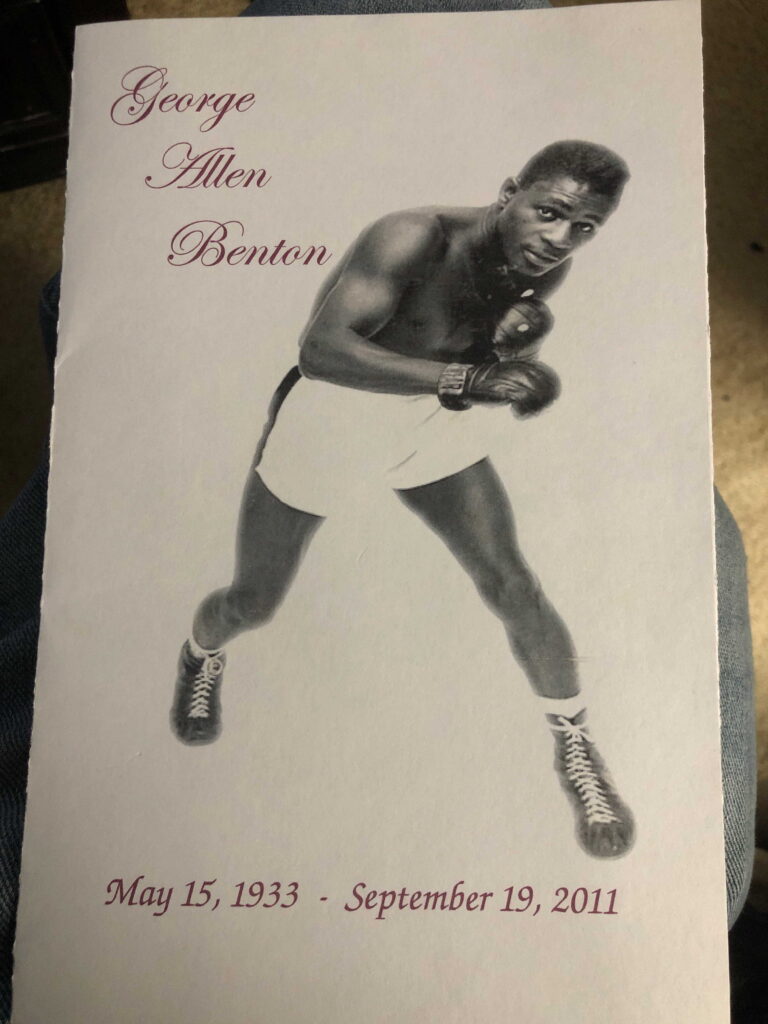
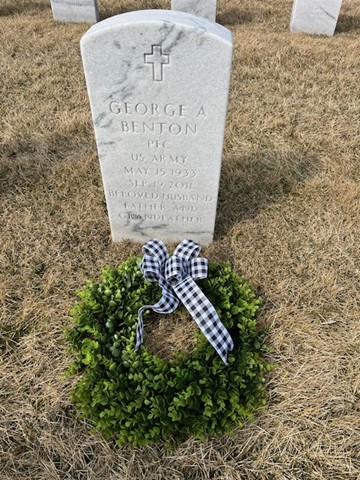
Bibliography
Primary Sources
“Benton Quick Winner.” Trenton Evening Times [Trenton, NJ], December 1, 1952. NewsBank: America’s Historical Newspapers. https://infoweb.newsbank.com/home.
“Buccerioni Scores Unanimous Verdict.” Trenton Evening Times [Trenton, NJ], 28 Jan. 1953. NewsBank: America’s Historical Newspapers. https://infoweb.newsbank.com/home.
“George Benton, 78, legendary boxing trainer. The Philadelphia Tribune [Philadelphia, PA], September 23, 2011. https://www.phillytrib.com/obituaries/george-benton-78-legendary-boxing-trainer/article_17f81e42-9fdc-52b1-80c9-b22b34bacb3f.html.
George Benton Boxing with Bobby Jones. Photograph. December 28, 1953. Philly Boxing History. www.phillyboxinghistory.com/photos/images/19531228pic.jpg.
“George Benton Kayoes Dorsey.” Times-Picayune [New Orleans, LA], May 3, 1955. NewsBank: America’s Historical Newspapers. https://infoweb.newsbank.com/home.
George Allen Benton, Certification of Military Service, Department of the Army. National Archives and Records Administration – St. Louis.
George Allen Benton, DD-214, Department of the Army. National Archives and Records Administration – St. Louis.
George Allen Benton, Discharge Order, Department of the Army. National Archives and Records Administration – St. Louis.
“G I Willy Turns Out To Be Crack Fighter.” Seattle Daily Times [Seattle, WA], August 7, 1956. NewsBank: America’s Historical Newspapers. https://infoweb.newsbank.com/home.
Naval Base Philadelphia-Philadelphia Naval Shipyard, Reserve Basin & Marine Railway, League Island, Philadelphia, Philadelphia County, PA. Photograph. Historic American Engineering Record Library of Congress (HAER PA-387-W). https://www.loc.gov/item/pa3415/.
Pennsylvania. Philadelphia County. 1950 U.S. Federal census. Digital images. https://ancestryclassroom.com.
Rafael, Dan. “George Benton dies at 78.” ESPN. Updated September 21, 2011. Accessed March 20, 2025. https://www.espn.com/boxing/story/_/id/7001072/george-benton-dies-was-legendary-philadelphia-boxer-trainer.
Ransom, Christopher. Frankford Arsenal, Building No. 251, Northeast corner Hagner Road & Walbach Street, Philadelphia, Philadelphia County, PA. Photograph. Historic American Engineering Record Library of Congress (HAER PA-74-N). https://www.loc.gov/item/pa2110/.
Secondary Sources
“The 1973 Fire, National Personnel Records Center.” National Archives and Records Administration. Updated March 15, 2023. Accessed March 20, 2025. https://www.archives.gov/personnel-records-center/fire-1973.
Beugoms, Jean-Pierre. “Arsenals.” Encyclopedia of Greater Philadelphia. Updated 2015. Accessed March 20, 2025. https://philadelphiaencyclopedia.org/essays/arsenals/.
Finkel, Ken. “Roots of Hypersegregation in Philadelphia, 1920-1930.” The Philly History Blog, February 22, 2016. https://blog.phillyhistory.org/index.php/2016/02/roots-of-hypersegregation-in-philadelphia-1920-1930/.
Fox, Levi. “Korean War.” The Encyclopedia of Greater Philadelphia. Updated 2016. Accessed March 12, 2025. https://philadelphiaencyclopedia.org/essays/Korean-war/.
“George Benton.” International Boxing Hall of Fame. Updated 2001. Accessed March 12, 2025. http://www.ibhof.com/pages/about/inductees/nonparticipant/benton.html.
“George A. Benton.” Find a Grave. Updated September 21, 2011. Accessed March 31, 2025. https://www.findagrave.com/memorial/76886463/george-a.-benton.
“George Allen Benton.” Veterans Legacy Memorial, U.S. Department of Veterans Affairs. Accessed March 31, 2025. https://www.vlm.cem.va.gov/GEORGEALLENBENTON/CF090E2.
“Historical Timeline.” Selective Service System. Accessed March 20, 2025. https://www.sss.gov/history-and-records/timeline/.
Homan, Spencer. “Remembering George Benton, North Philadelphia Boxing Great.” The Spirit of Penn’s Garden, June 8, 2016. https://spiritnews.org/articles/remembering-george-benton-north-philadelphia-boxing-great/.
Lewis, Charles E. “History of the 7th Cavalry Regiment.” Lewis-Genealogy.org. http://lewis-genealogy.org/military/7th_cavalry_regiment.htm.
Pike, John. “Camp Zama.” Global Security. Accessed March 20, 2025. https://www.globalsecurity.org/military/facility/camp-zama.htm.
Ward, Matthew. “Boxing and Boxers.” Encyclopedia of Greater Philadelphia. Updated 2016. Accessed March 20, 2025. https://philadelphiaencyclopedia.org/essays/boxing-and-boxers/.
“Why Philadelphia?” Civil Rights in a Northern City: Philadelphia. Online exhibition. Temple University Libraries, Temple University. https://exhibits.temple.edu/s/civil-rights-in-a-northern-cit/page/why-philadelphia-.
This profile was funded by a grant from the United States Department of Veterans Affairs. The opinions, findings, and conclusions stated herein are those of the author and do not necessarily reflect those of the United States Department of Veterans Affairs.

